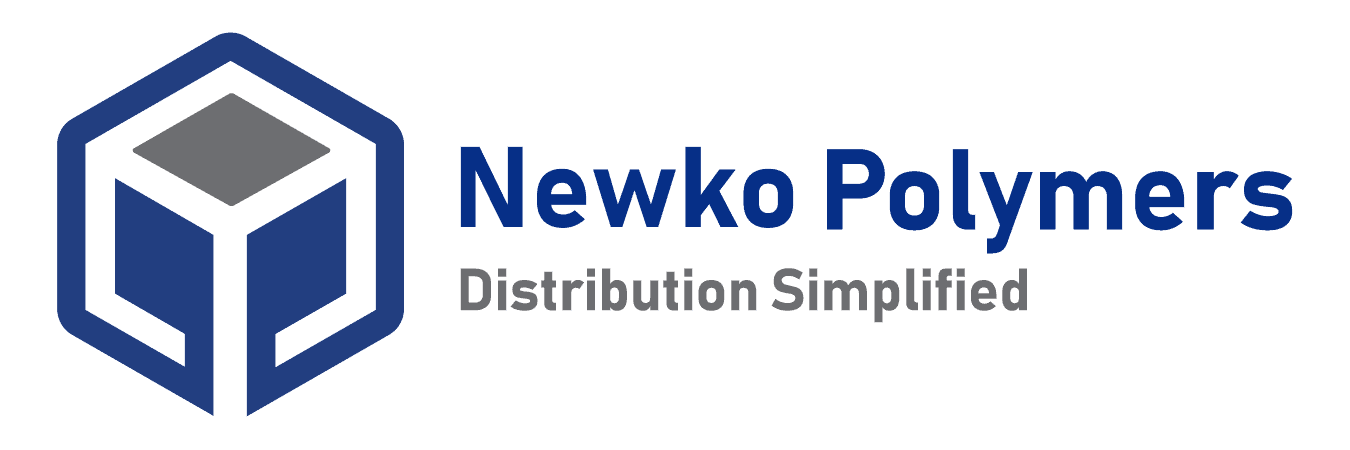Polypropylene (PP)
Polypropylene (PP) is one of the most widely used thermoplastics, known for its excellent balance of mechanical properties, chemical resistance, and low cost. It is versatile and can be customized for a wide range of applications through the use of different fillers and reinforcements. Polypropylene is available in two primary forms: homopolymer and copolymer, each offering unique characteristics tailored to specific performance needs. Additionally, PP is available in a variety of melt flow rates, from fractional melt for high-impact, low-flow applications to 80+ for fast processing in thin-wall components.
Types of Polypropylene
Homopolymer Polypropylene
Homopolymer polypropylene is the most common type of PP, offering high strength and rigidity. It is generally used in applications requiring a good balance of mechanical properties and ease of processing.
Key Properties:
- High stiffness and tensile strength.
- Good chemical and solvent resistance.
- Lower impact resistance compared to copolymer, especially at low temperatures.
- Suitable for applications that require high heat resistance.
Applications:
- Automotive: Used in interior trims, bumpers, and exterior panels.
- Industrial: Ideal for piping systems, tanks, and other structural components.
- Packaging: Common in rigid containers, caps, and closures.
Copolymer Polypropylene
Copolymer polypropylene, available in both random and block copolymer grades, provides enhanced impact resistance, particularly at low temperatures, making it suitable for applications requiring toughness and durability.
- Random Copolymer:
Provides improved clarity and flexibility, making it ideal for applications requiring transparency and some flexibility. - Block Copolymer:
Offers superior impact resistance and toughness, particularly at lower temperatures, making it ideal for heavy-duty applications.
Key Properties:
- Higher impact resistance than homopolymer, particularly in cold temperatures.
- Improved toughness and flexibility.
- Good chemical and moisture resistance.
Applications:
- Automotive: Used in parts like dashboards, impact bumpers, and battery cases.
- Industrial: Ideal for storage tanks, containers, and heavy-duty parts.
- Packaging: Common in high-impact containers and packaging materials.
Fillers and Reinforcements
Unfilled Polypropylene
Unfilled PP is the base polymer with no added fillers or reinforcements. It offers a balance of good chemical resistance, flexibility, and moderate mechanical strength. This grade is widely used in applications where cost-effectiveness and processability are the main considerations.
Key Properties:
- Good chemical resistance.
- Low density, making it lightweight.
- Suitable for injection molding and extrusion processes.
Applications:
- Packaging: Used for containers, bottles, and caps.
- Consumer Goods: Ideal for household products, furniture, and storage solutions.
Mineral Filled (Calcium or Talc Filled)
Mineral-filled polypropylene, typically filled with calcium carbonate or talc, offers improved stiffness, dimensional stability, and lower shrinkage. This type is commonly used in applications requiring a balance of rigidity and cost-efficiency.
Key Properties:
- Enhanced stiffness and heat resistance.
- Improved dimensional stability and lower shrinkage.
- Increased weight compared to unfilled PP.
Applications:
- Automotive: Used for interior parts like dashboards and door panels where rigidity and dimensional stability are needed.
- Appliances: Suitable for parts that require enhanced heat resistance and dimensional control.
- Industrial: Ideal for structural parts and enclosures.
Glass Filled Polypropylene
Glass-filled polypropylene is reinforced with glass fibers, offering significantly increased stiffness, tensile strength, and heat resistance. This makes it ideal for structural applications where high strength and rigidity are required.
Key Properties:
- High tensile strength and stiffness.
- Excellent dimensional stability.
- Enhanced heat resistance, making it suitable for high-temperature environments.
- Lower elongation at break compared to unfilled PP.
Applications:
- Automotive: Used in structural components, under-the-hood parts, and high-load-bearing components.
- Industrial: Ideal for high-performance parts like gears, mechanical components, and housings.
- Appliances: Suitable for high-strength parts that require long-term durability under load.
Melt Flow Ranges
Polypropylene is available in a wide range of melt flow rates (MFR), offering flexibility in processing and performance:
Fractional Melt (Low MFR):
-
Typically below 1 g/10 min, this grade offers high impact resistance and toughness but slower processing speeds. It is ideal for applications requiring high impact strength and thick-walled parts.
- Automotive bumpers and dashboards.
- Industrial components requiring strength and durability.
- Packaging, containers, and caps.
- Household products and appliances.
- Thin-walled packaging, food containers, and film.
- Precision components requiring fast cycle times.
Applications:
Standard Melt (MFR 1-20 g/10 min):
-
These grades provide a balance of impact strength and processability, making them suitable for general-purpose injection molding and extrusion applications.
Applications:
High Melt Flow (MFR 20-80+ g/10 min):
High melt flow grades offer fast processing speeds and are ideal for producing thin-walled parts and intricate designs with fine details.
